It’s been a disappointing autumn so far. Considerable rain, unseasonable amounts of snow and of course, it’s been quite cool. We finally got a break this week and I didn’t miss the opportunity. On Tuesday, Bob Bear and I embarked on a photographic road trip, deferred from mid-September due to the inclement weather. The following map shows our travels on the first of two days. We visited two locations, Midland Provincial Park in Drumheller and Writing-on-Stone Provincial Park in Alberta’s southeast corner, adjacent to the US Border.
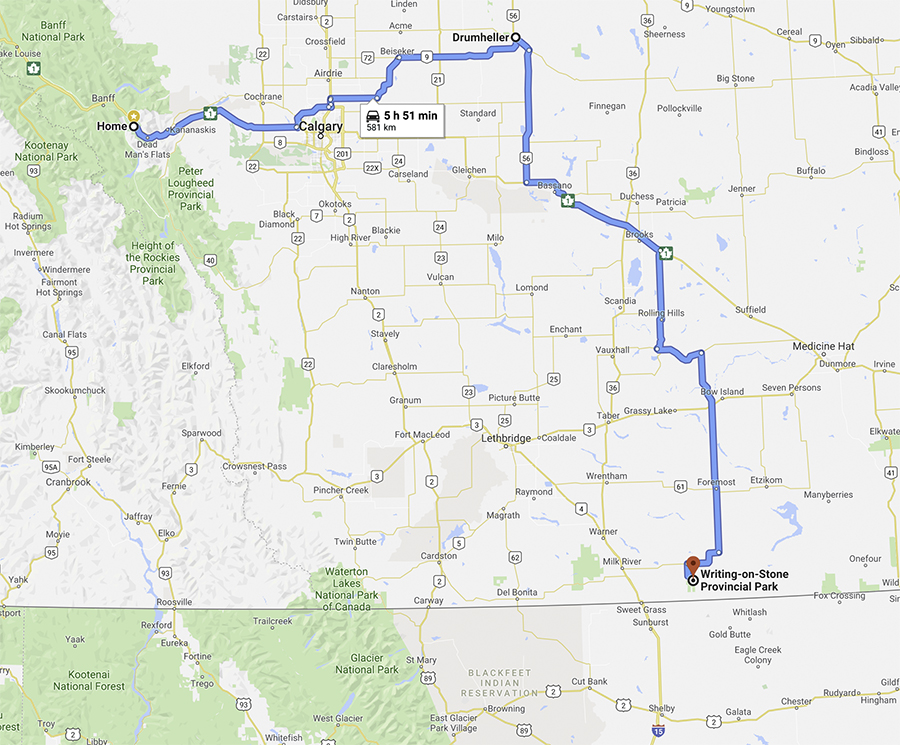
Our first stop, Drumheller is a town northeast of Calgary, known for the Royal Tyrrell Museum which contains a large collection of dinosaur fossils. Dinosaurs roamed this area in prehistoric times and when they became extinct, their remains were buried in the area. Over time the Red Deer River cut away the soft rock, exposing these remains and creating a large area of badlands. Badlands are a type of dry terrain where softer sedimentary rocks and clay-rich soils have been extensively eroded by wind and water. Badlands often have a spectacular colour display that alternates from dark black/blue coal stria to bright clays to red scoria (a highly pitted, dark coloured volcanic rock that may or may not contain crystals. Badlands are not arable and are not suitable for building construction. They do have a beauty of their own and in Drumheller, they’re part of the tourist equation along with the museum. It’s the badlands that attracted us there; it’s a very appealing area for photographers. (Remember, beauty is in the eye of the beholder!)
I have three photographs taken from the interpretive trail that leads through an area of the badlands inside Midland Provincial Park. The first one was taken from the high point of the trail, well above the height of the hoodoos on the valley floor. A hoodoo is defined as a slender and tall spire of rock protruding from the base of an arid drainage basin or badland. Hoodoos portray one of the unique geological landforms formed through erosion processes. Each of the structures pictured below is considered a hoodoo. In the background is the cliff face of the valley.
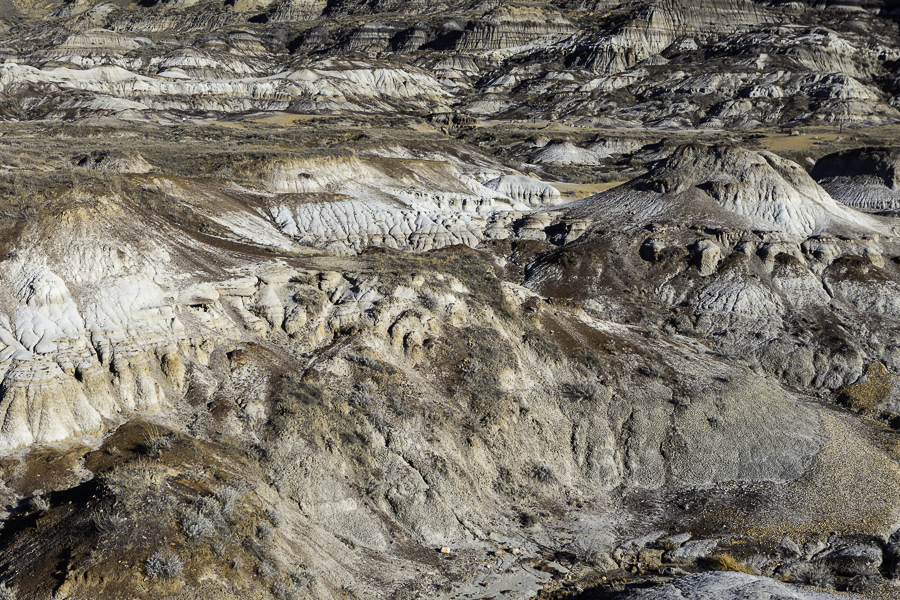
The trail leads down onto the valley floor, where I took this next picture of a hoodoo from a little closer and of course, lower. This scene offers a good view of the sedimentary layers and their varied colours. You can also see the continuing effect of erosion of the soft rock by wind and water.
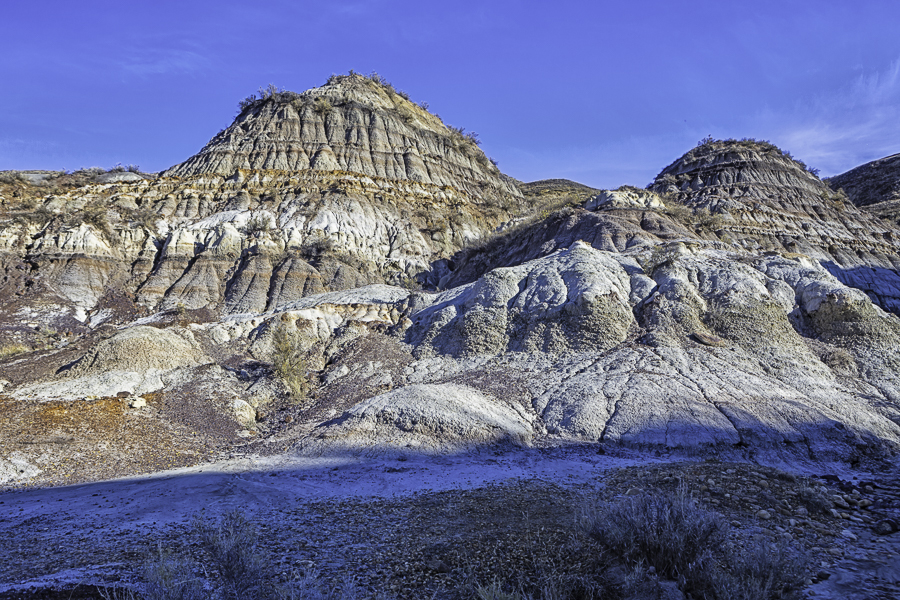
I approached this next hoodoo much more closely to get a better picture of the detail of its surface. This one displays a good variety of colours; beige, yellow, orange and brown. Again, you can clearly see the effects of erosion.
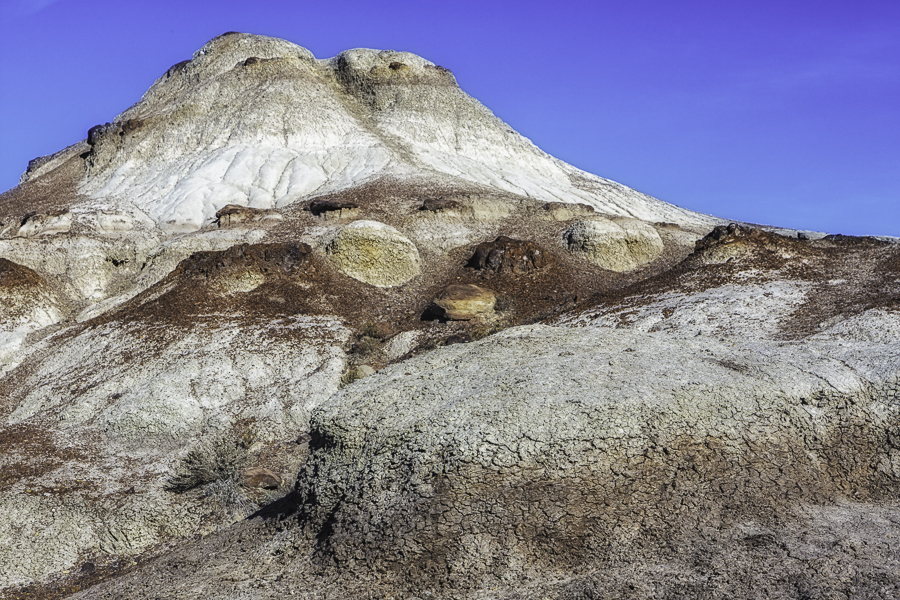
Facing a long drive to our next destination, we caught some lunch and headed for Writing-on Stone Provincial Park soon after.
Writing-on-Stone Provincial Park is located about 100 kilometres southeast of Lethbridge, or 44 kilometres east of the community of Milk river and straddles the Milk River itself. It is one of the largest areas of protected prairie in the Alberta park system, and serves as both a nature preserve and protection for a large number of aboriginal rock carvings and paintings. The park is important and sacred to the Blackfoot and many other aboriginal tribes. The park has been nominated as a World Heritage Site.
This first picture is the first impression one gets upon arrival. Most of the park is located in a gorge fashioned by the Milk River, which runs in the bottom. The gorge is lined with hoodoos and a cliff face. Writing-on-Stone Park contains the greatest concentration of rock art on the North American Great Plains. There are over 50 petroglyph sites and thousands of works. Regrettably, our visit was out-of-season and we were unable to be guided to their locations. Next time!
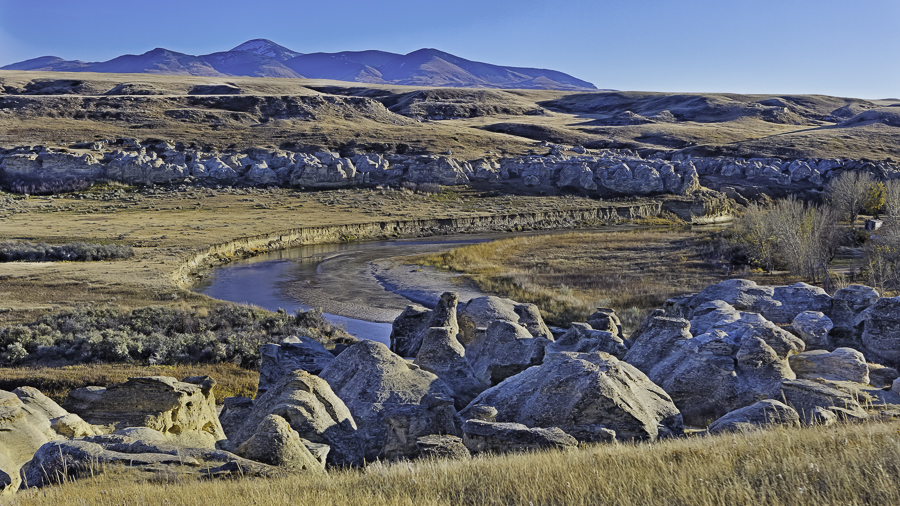
This next photograph was taken at the bottom the gorge at a turn in the river (actually the same turn pictured in the photograph above). In the foreground is a beach actually used by visitors in summer. I was fortunate to enjoy a wind-free evening and capture a beautiful reflection of the cliffs bordering the gorge.
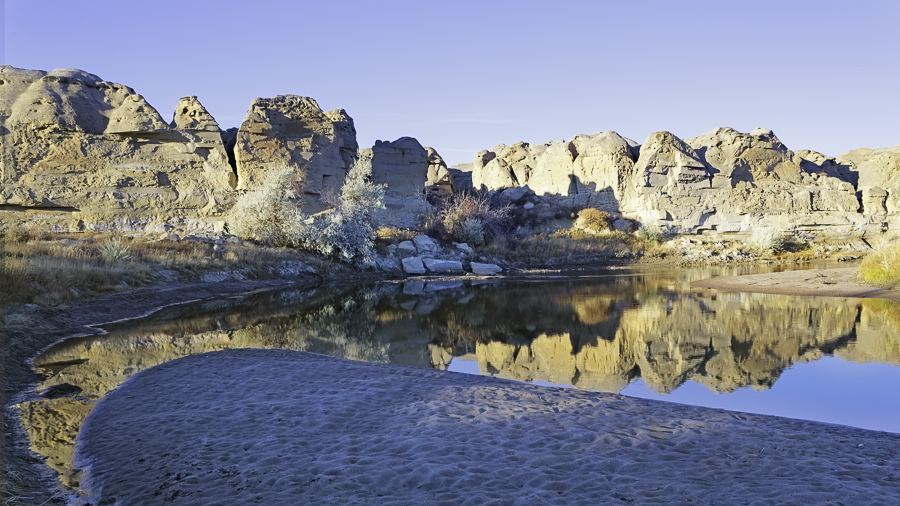
My last picture shows a hoodoo I encountered as I walked among them. It was late in the afternoon and I was struck by the glow of sunlight on the rock face. I took my picture in the shadow of the hoodoo and was able to secure this scene of the late afternoon light illuminating the rock.
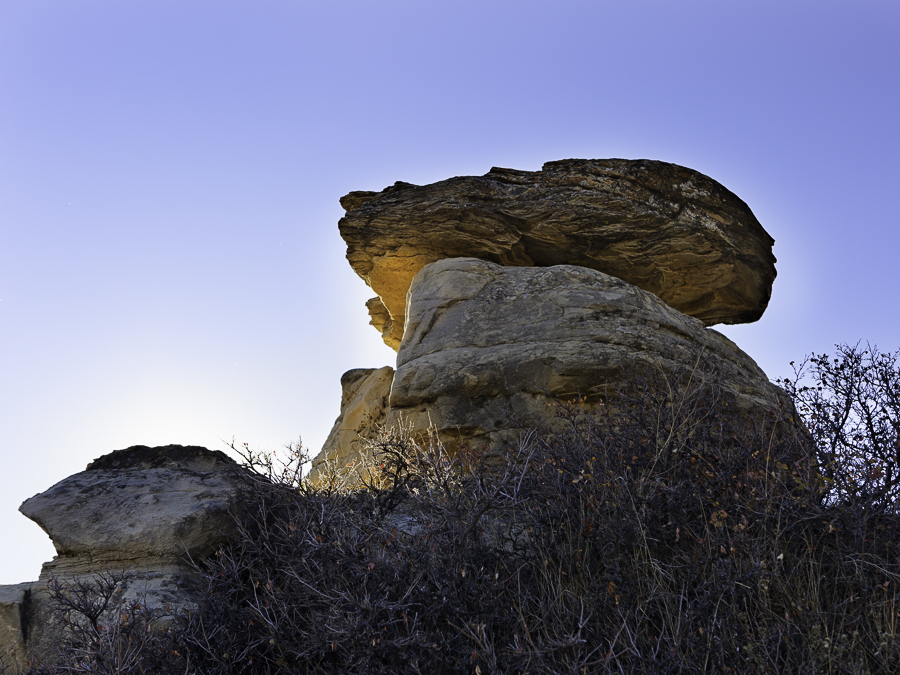
As the sun set, we packed up and left for Lethbridge ready for a good rest following a long and satisfying day. More to follow about Day 2 of our journey.

Love that Drumheller area and what could be more perfect than a reflection of the hoodoos 🙂 🙂 Beautiful Peter!
Nice pics! Both of these sits are on my to-do list. I drove by Midland last summer but did not have time to check it out. I opted for Horseshoe Canyon and Dinosaur PP instead. WOS is still on the list – next year….
Nice work, Peter. A fine display of some of the visuals from our enjoyable trip. Excellent commentary too, as always.
Hi Peter:
Some very interesting rock scenes, you captured the beauty of all the boulders and waters.
Hi to Rolande